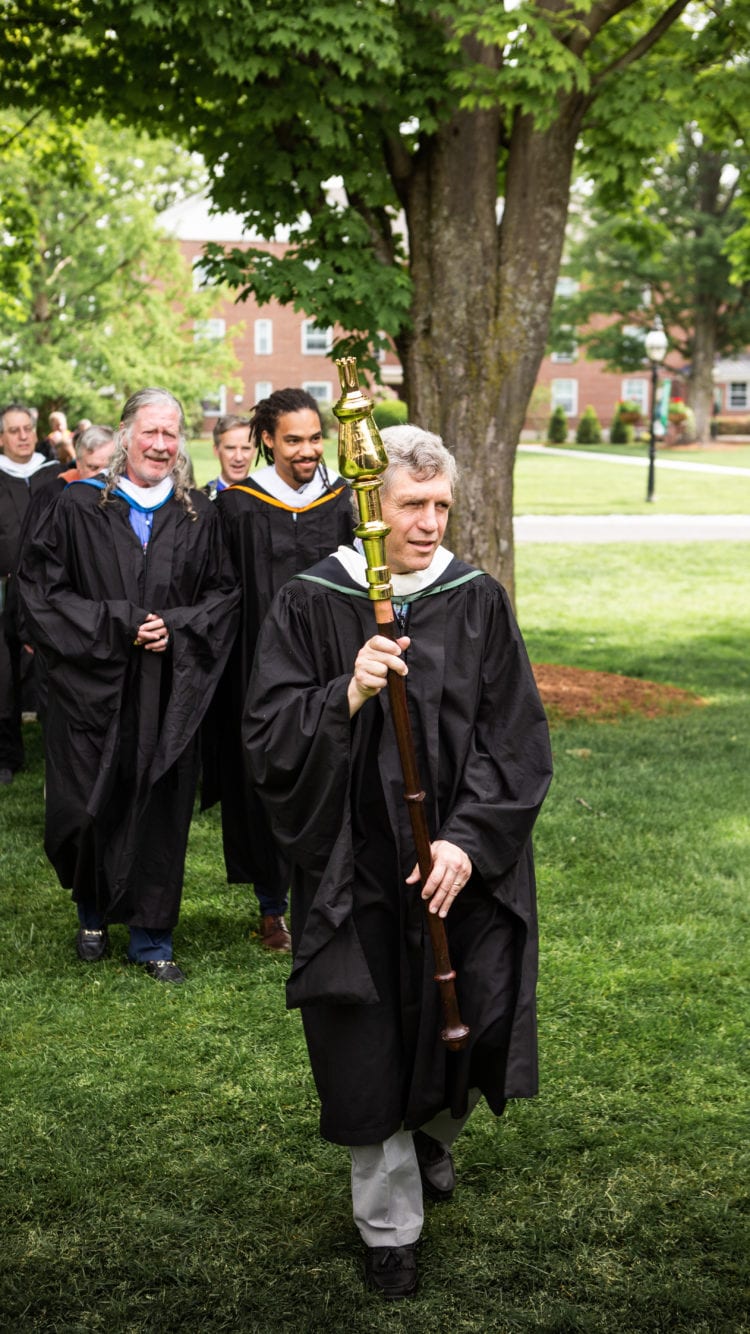
In the next few days seniors and underclassmen alike will gather for annual ceremonies in which people march around in strange clothes, ring bells, and so on. Some of what we do is easily explained. We process to Highland bagpipes because back in the 1950s, Headmaster Phillips Stevens liked pipe bands. Some is less obvious, but believe it or not, there is meaning to all of this.
There are two main events: Baccalaureate and Commencement. Baccalaureate–the name has nothing to do with the Roman god Bacchus; rather it is from the same root as the word “bachelor,” from medieval times when young men, on the evening before they became knights, kept an all-night prayer vigil in church. So the Baccalaureate service, while not especially religious here at secular Williston, is a serious event concerning our seniors’ transition to adulthood. I’ve been asked why graduation, the final moment of the school year, is called “Commencement.” There was a popular cliché in the seventies that actually applies here. Seniors: Saturday will be the first day of the rest of your lives.
The faculty will process wearing academic regalia, specifically gowns and hoods. While this may resemble the last staff meeting at Hogwarts, it evokes a tradition hundreds of years old. The roots of education in the Euro-American tradition lie in the medieval universities, which were founded and run by the Church. Faculty were members of the clergy or monks. Our academic costume acknowledges those roots.
Faculty with bachelor’s degrees wear simple robes, while master’s and doctor’s gowns are more elaborate. Doctor’s gowns have striped sleeves and longer hoods. Our collegiate colors are in the hoods. My own, for example, is from the University of Michigan—maize and blue. The yellow border indicates that I have a library degree. If I had an arts degree, it would be white, science, a different yellow, education, blue, and so on.
A senior faculty member will lead the procession carrying the school’s mace. This is another medieval reference. The mace’s origins are as a weapon, carried into battle by clergy who were not permitted to use swords because they were prohibited from shedding blood. (Apparently causing internal bleeding was OK.) A ceremonial mace is an ornamental staff carried as a symbol of authority. In the U.S. Congress, when the Speaker of the House is in attendance, a mace is placed to the right of his chair. Similarly, in the British House of Commons, the Speaker is preceded by the mace at all official occasions. Many university faculties process with maces—fewer secondary schools.
Williston’s mace, which asserts the authority of the faculty, is of rosewood, with a gilt head on which are engraved the names of past headmasters. The design evokes a former campus landmark, the tower of the first gymnasium. Whoever cast it mounted the tower arches upside down—and the mace is a bit banged up. I’m not sure what this says about faculty authority.
Mr. Hill will wear a chain of office, another old tradition. Ours was presented to Williston Academy in 1966, on our 125th anniversary. True story: delivery was delayed because the artist who made it was working on something for the Pope. The silver chain and pendant are symbolic of several things: of the special authority of the Head of School, and of the connection between students and the school. Aspects of our history are evoked in the design. For example, the chain incorporates elm leaves and intertwined S’s and W’s. On one side of the medallion is the embossed seal of Williston Academy, and on the other, the seal of the present Williston Northampton School.
One final note: during the Commencement ceremony, you will be asked for a moment of silence while we sound the Northampton School for Girls Angelus—the bell that hangs between the Head’s house and 194. When the Angelus was rung daily at Northampton School, everything stopped for a minute of silent contemplation. Our alma mater refers to a “joyful bell,” but the Angelus is also a bell of remembrance. I urge you to use that moment to think on those who sent you on this journey, those who will be here with you Saturday, and—especially—those who could not make the journey.
Congratulations, class of 2018. Go with love.
